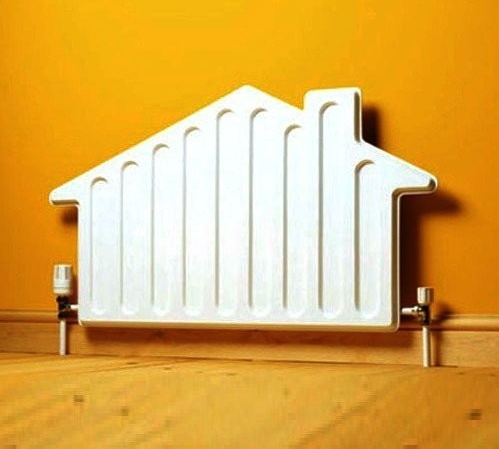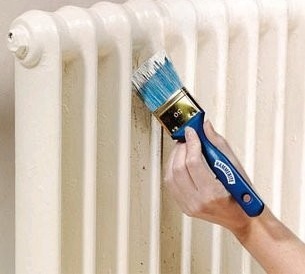How and how to close a heating battery - popular solutions to a design problem
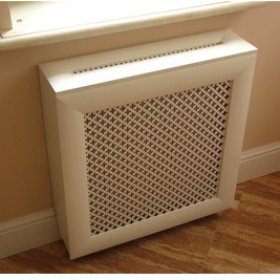
Screens and decorative grilles, selected for the interior of the room, allow you to make invisible massive radiators. Such masking in apartments and residential buildings is necessary to satisfy the aesthetic needs of residents. Whereas in kindergartens, schools and other institutions where children can be, fences for heating radiators are installed without fail to ensure their safety. From the rich assortment of ready-made screens sold in construction stores, the buyer cannot decide for a long time, because he cannot understand why it is best to close the heating battery.
For residential premises and offices, many choose cheap plastic screens, available in various colors to facilitate the selection of grilles for the interior. In institutions, only wooden screens made of natural wood are allowed.
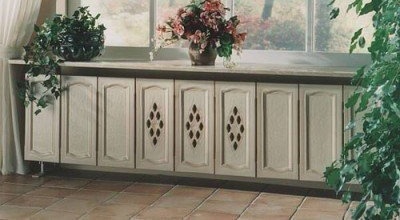
The view of the open window should not be clouded by heating devices that can be easily hidden behind decorative screens
Types of decorative grilles and screens
Based on the design features, all screens designed to mask heating radiators can be divided into several groups:
- hanging screens with or without covers are used to close cast-iron batteries located in a niche under window sills or slightly protruding forward;
- flat screens are suitable for fencing radiators hidden deep in niches;
- screens in the form of an attached box allow you to completely hide the installation location of the heater.
Guards for batteries are also divided according to the material of manufacture.
Decorative grilles can be:
- metal;
- plastic;
- wooden;
- MDF;
- glass.
Making a box or false wall from drywall
Many residents repairing the apartment do not like not only the type of batteries, but also the wiring of the pipes of the heating system. The presence of the pipeline makes it difficult to install suspended ceilings and floor coverings. Therefore, all wiring along with the batteries can be hidden behind a false wall made of drywall.
If every square centimeter of usable area is saved in a room, then instead of a false wall, the box is made of the same material. Let's look at how to close a plasterboard heating battery with your own hands.
Tools and Materials
For installation of the structure, the following tools and building materials will be needed:
- tape measure and pencil;
- screwdriver;
- scissors for metal;
- level;
- screws and dowels;
- drywall;
- UD and CD profile;
- decorative lattice.
Installation procedure
If the heating radiator is located in a niche located under the window sill, then to mask it, it is required to erect a profile frame around the perimeter of this recess. In this case, using the guide profile UD, attached to the bottom of the windowsill, to the floor and walls with self-tapping screws, create a single frame.
The front edge of the frame is deepened by 13 mm, which makes it possible to obtain a surface matching the wall after screwing on the drywall.
Important! Then, a CD profile is vertically inserted on both sides of the heating radiator into the designed frame. Moreover, the distance between these profiles should slightly exceed the dimensions of the decorative lattice.
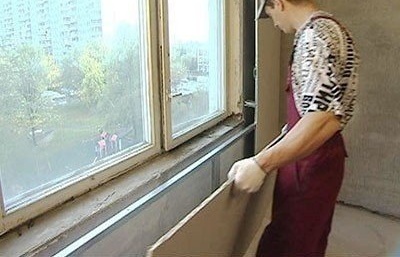
Using drywall sheets sewn onto a profile frame, it is possible to hide the battery and the heating wiring behind a false wall
Then, four vertical segments of the UD profile, the length of which is 6 cm, are patched to the vertical CD profiles. The segments must be placed with the open side to the heating battery, since they will serve as frames into which horizontal profiles will be inserted indicating the height of the decorative frame. Depending on the actual size of the existing niche, you can install additional vertical CD profiles every 60 cm.
After finishing work on the preparation of the frame, it is sutured with sheets of drywall, which are putty and hang in the designated space a decorative grill. Profiles are fastened together by small LM-screws.
Important! It is necessary to foresee in advance how to close the heating radiators with plasterboard so that the heating appliances and connections have free access for their repair and maintenance.
Advantages of mounting decorative grilles on heating radiators
- Reduces the dustiness of complex batteries for cleaning and washing.
- The choice of a protective screen suitable for the style and material of manufacture to the interior of the room.
- Protection of small children from possible bruises when falling on metal devices, as well as from burns that can be obtained by touching them.
- Ensuring an even distribution of warm air flows in the space of the room.
- A quick way to disguise old batteries that do not fit into the general appearance of a renovated room.
Various models of screens and decorative grilles allow you to close the heating radiator in the best way. Without denying that this is beautiful, some believe that batteries should not be closed, since heat transfer decreases significantly. However, in practice, this opinion is refuted by successfully operated gratings that do not impede the release of heat through their openings.

